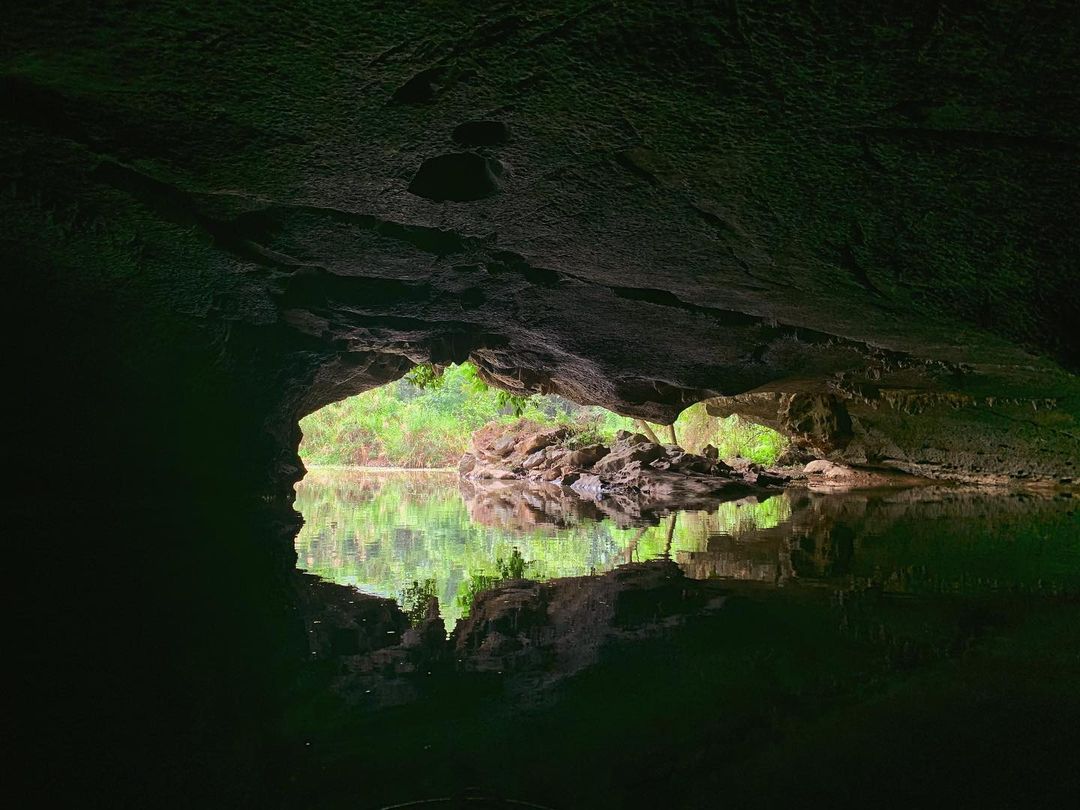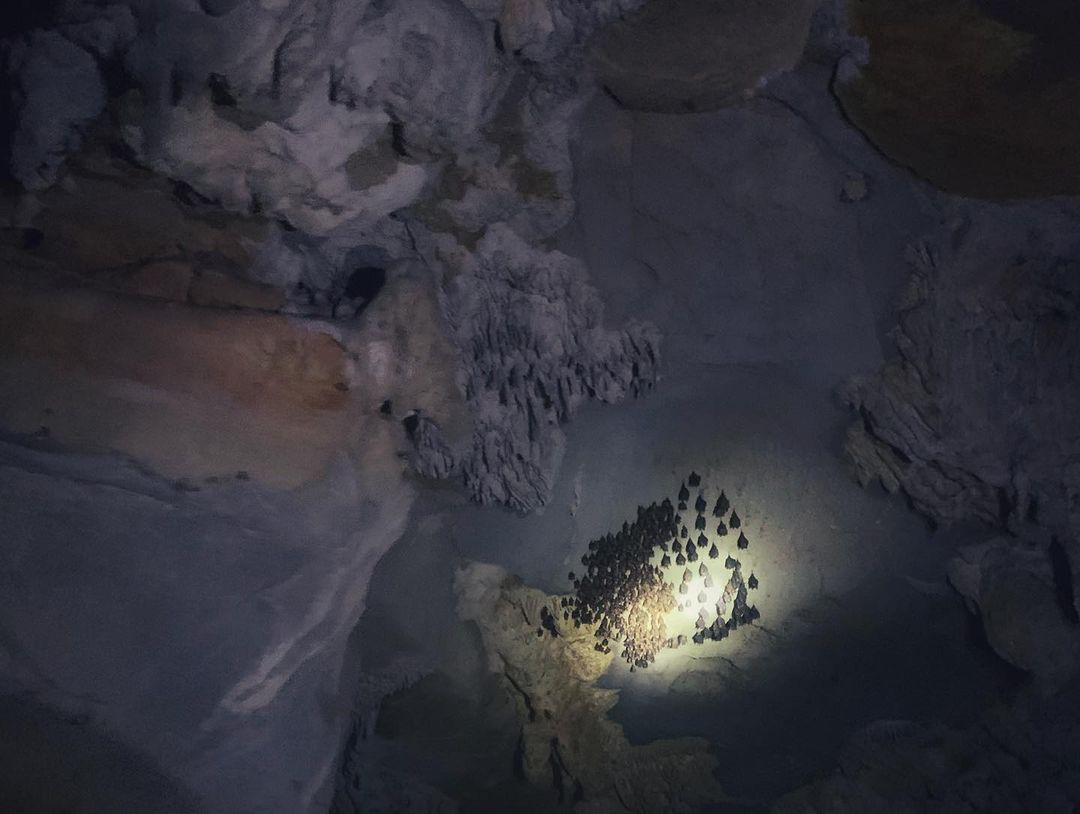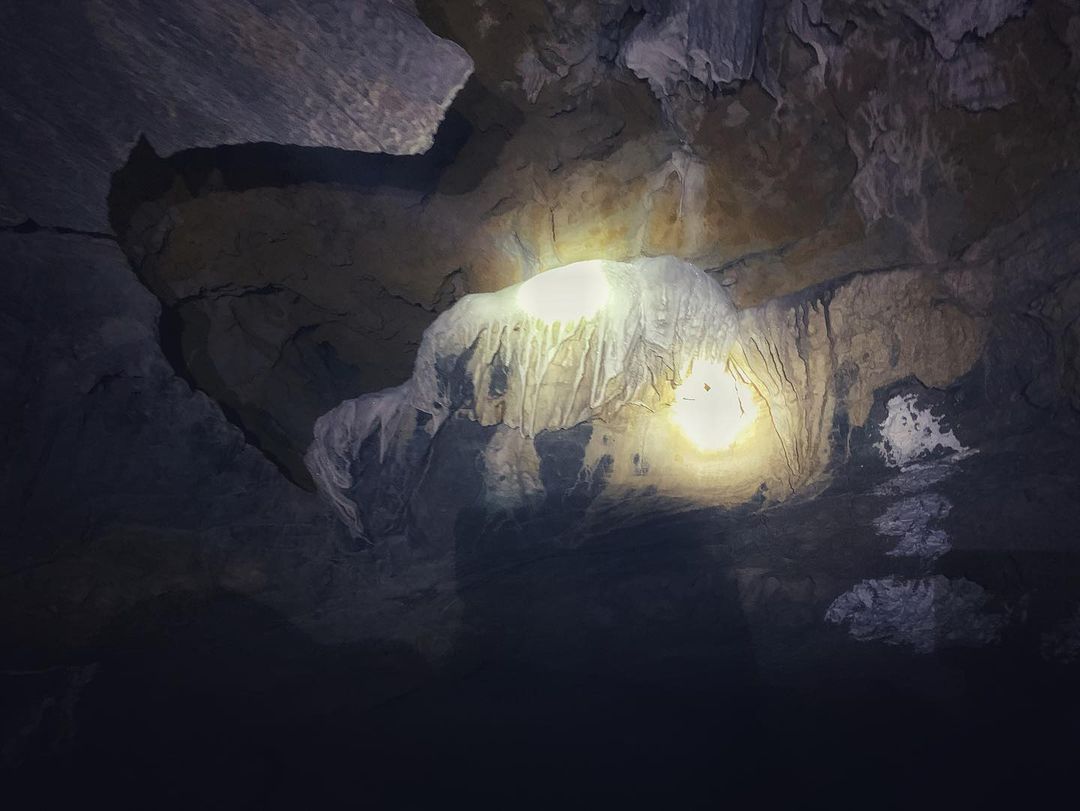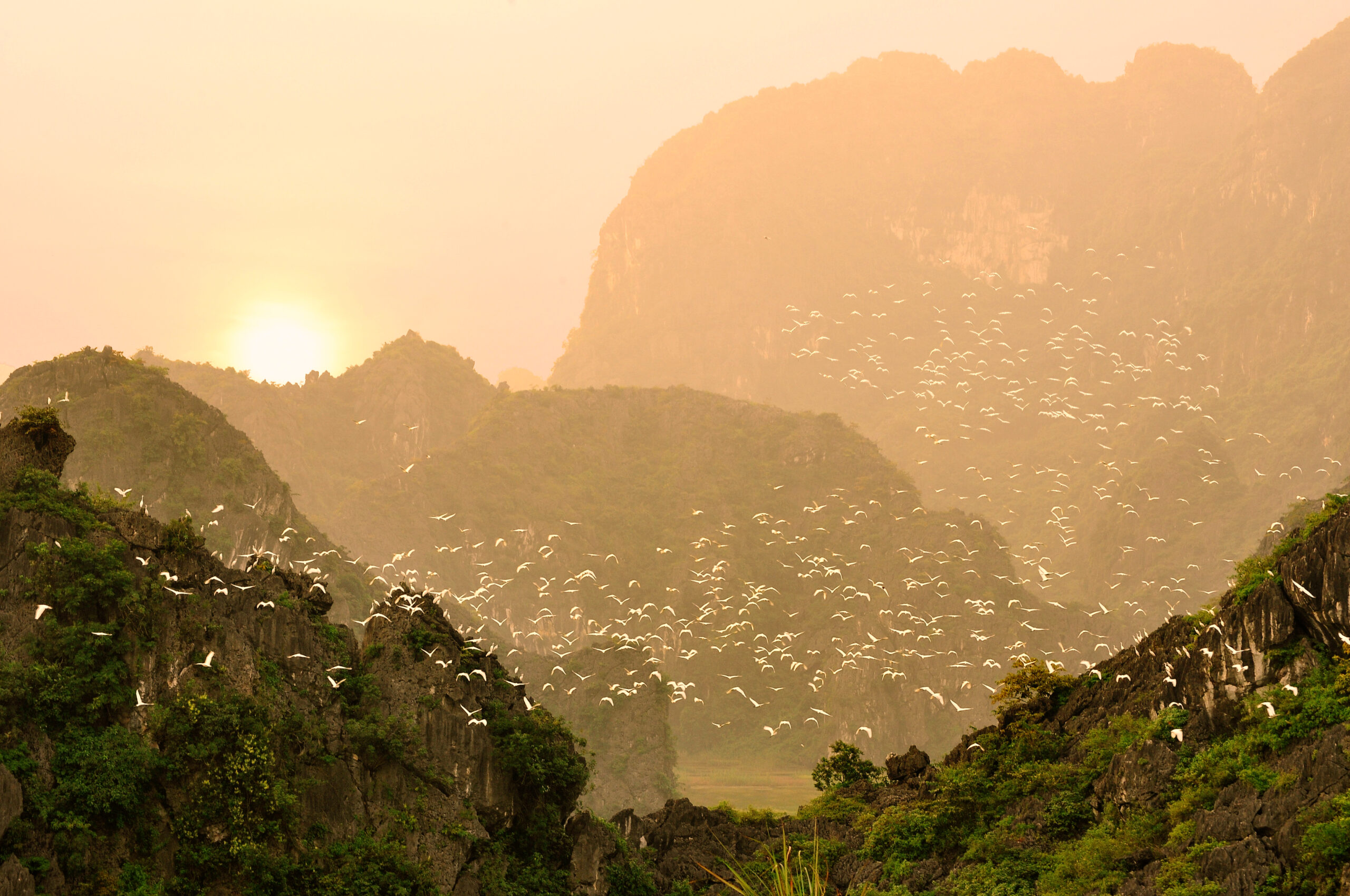
Capture The Zeitgeist Of Ancient Times With A Trip To Thung NhamŌĆÖs Unspoiled Cave System
A visit to the Thung Nham natural cave system offers the rare opportunity to step into the heart of the Earth. For some, going caving evokes a fear of the unknown, while for others, it is the excitement of discovering lost history. Either way, there is no doubt about where visitors are. This is Ninh Binh in a nutshell.
Table of contents
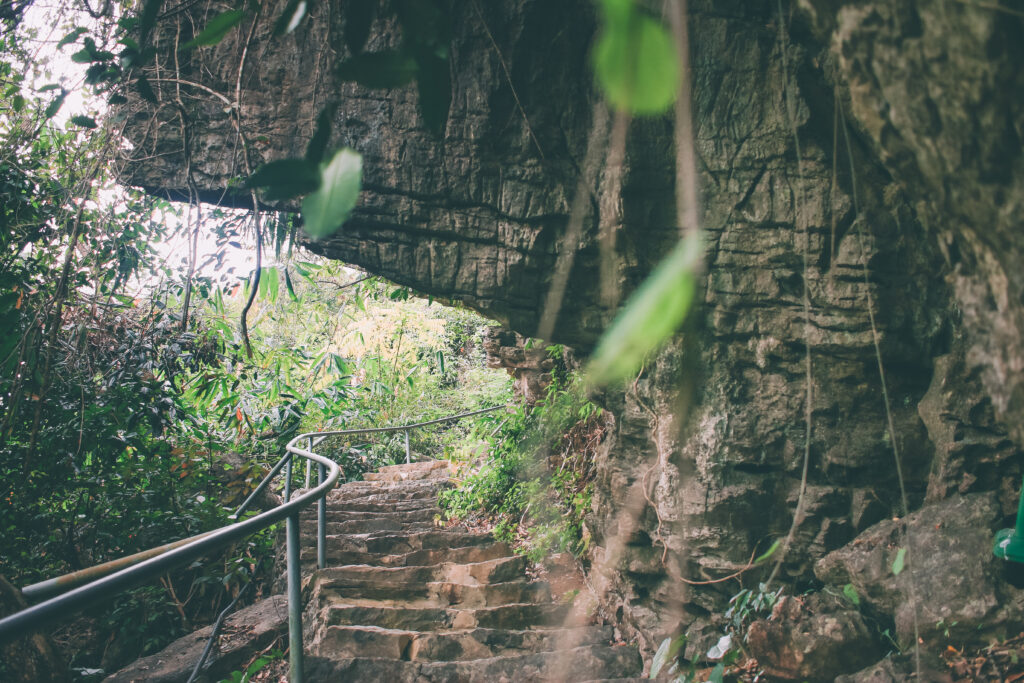
1. Dong Vai Gioi (Prostrate-Before-God Cave)
In terms of magnificence and scale, Vai Gioi Cave (Prostrate Before God) definitely takes some beating. A scenic walk consisting of 439 stone steps takes travelers up the mountain to this 5,000 m2 cavern. The journey to reach the entrance can be strenuous but it is its own reward.
As is very often the case in Vietnam, peopleŌĆÖs view of nature is utterly inseparable from the spiritual world. The story begins back in the 10th century, when the supernatural structure – born of peopleŌĆÖs desire to explain the confusing world around them, became their frame of reference that triggered a unique interpretation of the shape of the stalactites and stalagmites inside Vai Gioi Cave.
According to local belief, the three chambers of the cave represent the three realms of existence – heaven, Earth, and hell. The stone staircase leads to the ŌĆśEarthŌĆÖ chamber, which is filled with smooth stalactites that, in the local imagination, depict humansŌĆÖ idyllic existence.
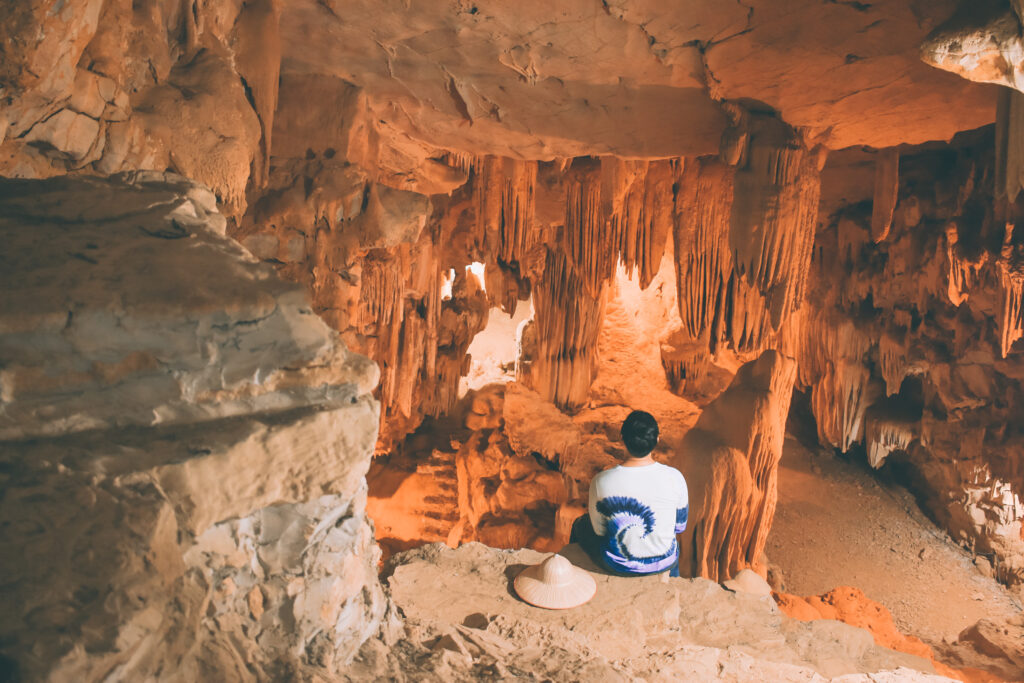
Just how much the cavern takes after what the Vietnamese picture the otherworld becomes clear the moment visitors descend into the pitch-black darkness of ŌĆśhell.ŌĆÖ Rock formation resembling hell hounds, a hellŌĆÖs throne, and reaper blades are everywhere one looks, complemented by an eerie chill and an ominous ambiance to create a vivid embodiment of the underworld.
A narrow iron stair takes visitors up to the ŌĆśheavenŌĆÖ chamber where the localsŌĆÖ imagination sees the god guarding the gate of heaven sitting beside a tiger, three Bodhisattvas (enlightened beings seeking Buddhahood), and a Buddha throne. Or perhaps it is the elevated position of the cave with a commanding view of the woven tapestry of the landscape and winding river down below that has inspired the belief that this chamber represents the celestial abode of the gods.
It was in this place that more than one thousand years ago, early residents of the Hai Nham hamlet laid offerings for the divine beings and prayed for good weather, bumper crops, as well as peace. The spot is believed to be the holy sanctuary where Earth and heaven intersect, yin and yang harmonize.
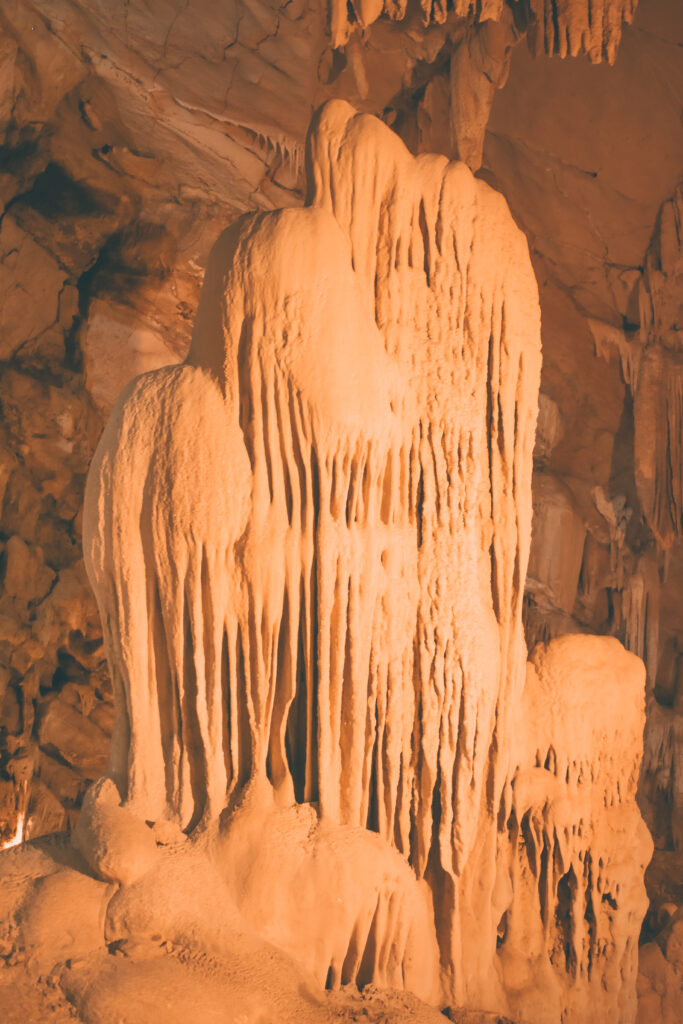
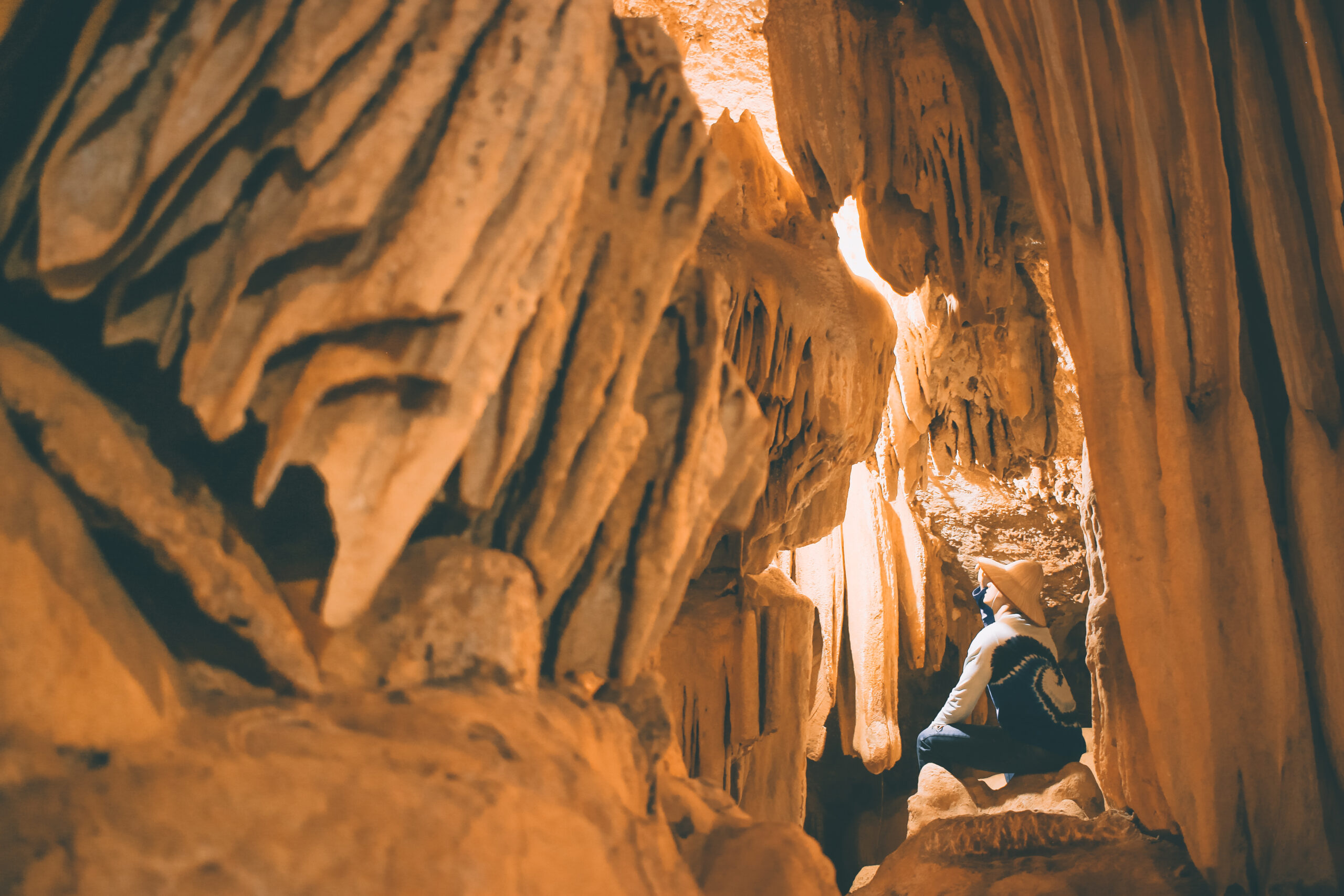
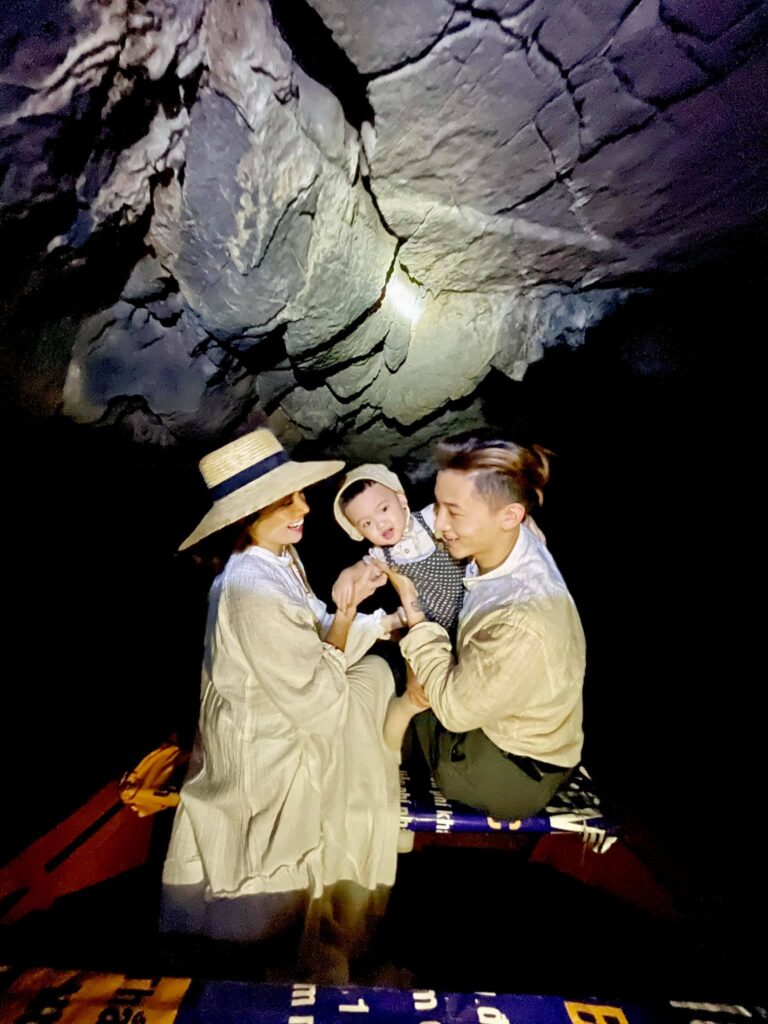
2. Hang But (Buddha Cave)
The 500-meter-long Hang But, Or Buddha Cave, connecting Nho Quan and Hoa Lu districts, is flooded with emerald green water. It has a storied history woven of imagination and fact.
The cave, or so local lore has it, is the path leading to a fertile land that was otherwise accessible only via a dangerous jungle path teeming with tigers and venomous snakes. In a period of calamity and lost harvest, famine pervaded. The local men – breadwinners of the families, had to risk their lives passing the dense jungle and towering cliffs of Tuong mountain in search of food.
One year, when a disastrous flood was wreaking havoc on the whole region, the local dwellers discovered the mouth of But Cave. Scared by the shocking darkness, few dared to venture far into the cave. Those who did told the tale of meeting an old man who directed them to the other end leading to the fertile land that took them days and sometimes their lives to reach.
Following the path of the pioneers, early residents of Hai Nham hamlet advanced into the cave but the old man was nowhere to be found. On the spot where he was last seen was a stone resembling him. Believing that the old man was the reincarnation of Buddha descended to Earth, the locals worshipped the stone and named the underground chamber Buddha Cave.
The cave is reached by tourist boats along the Ben Dang River – a tributary of the Hoang Long River, to where it vanishes into the mountain. The boat trip reveals stalactites said to resemble a fairy, pigeons, and flower bouquets hanging from the roof.
Unlike the rest of the Thung Nham cave system, ŌĆśHang ButŌĆÖ is relatively devoid of human intervention – everything is left as it was found. Once inside, the flashlights on the boats will come in handy to help visitors make out the various shapes of rock formations in the inky darkness. Remember to watch for the swarm of bats that call this place their home.
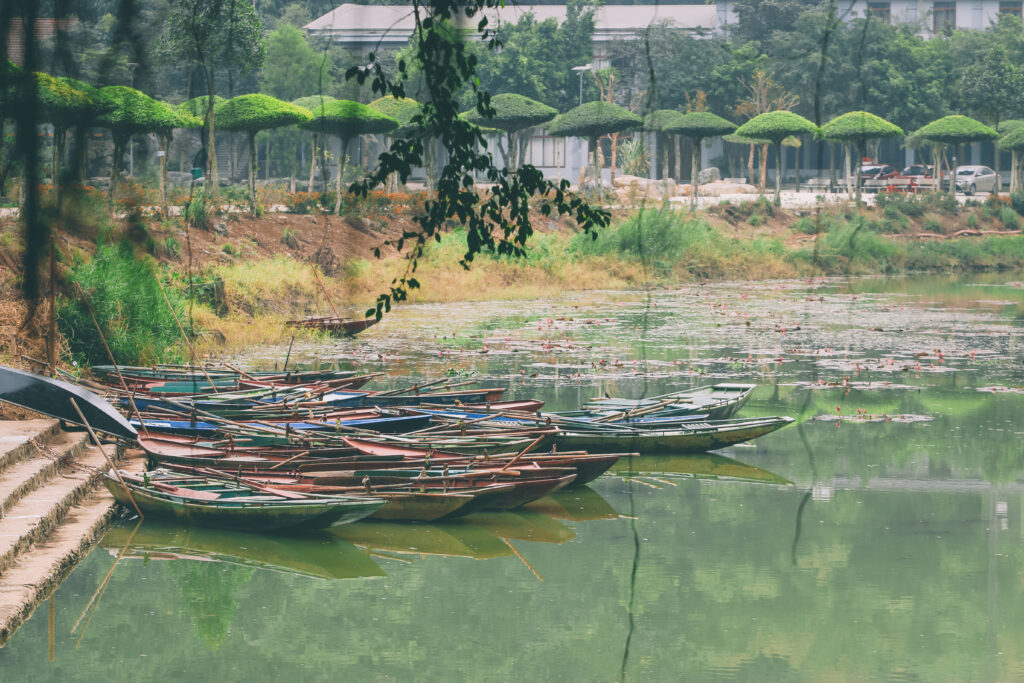
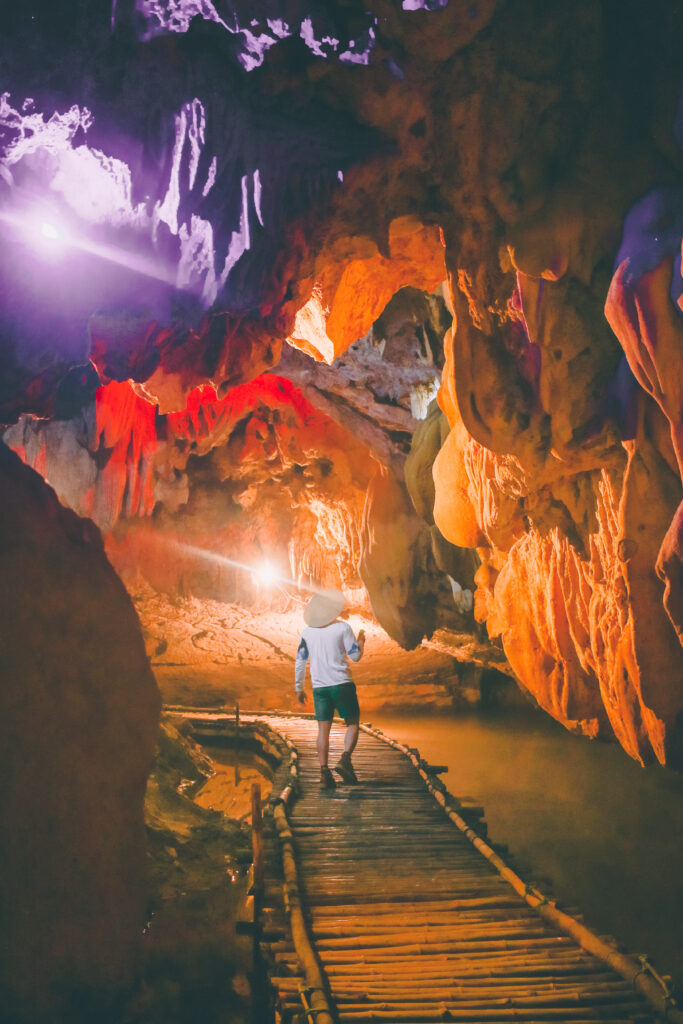
3. Dong Tien Ca (Mermaid Cave)
Dong Tien Ca, or Mermaid Cave, is not as well-known as the Quang Binh cave system, but it has the edge in beauty and accessibility. Like ŌĆśDong Vai GioiŌĆÖ and ŌĆśHang But,ŌĆÖ the name alone carries a weight of mystery that can entice just about anyone. It has two entrances: one located near the Buddha Cave, and another that overlooks Fairy Lake and leads to a walking trail to Thung Nham Bird Park.
Exploring a river cave like this one enables the visitor to observe first-hand the force of water in action and aquatic animals in their natural habitat, while at the same time, savoring the beauties of ornate rock formations.
Mermaid Cave ┬Āis one of Thung NhamŌĆÖs magnificent karst topographies, complete with a bamboo walkway leading visitors through maze-like halls and tunnels replete with pristine speleothems.
Before it assumed its current name, ŌĆśDong Tien CaŌĆÖ was known as Fish Cave to the locals as it shelters the ŌĆśTong TruongŌĆÖ climbing perch and ŌĆśca trauŌĆÖ – a member of the snakehead family, two delicacies across Vietnam with the latter being affectionately called the ŌĆśfood of emperors.ŌĆÖ The two fish species are endemic to the Thung Nham Ecotourism complex and Truong Yen village and are found nowhere else in Vietnam.
Visitors can self-navigate their way through the cave by walking, scrambling, and even crawling for more than 500 meters under the mountain, immersed in a sense of history and serenity hanging heavy in the air. The journey culminates with the sighting of schools of ŌĆśTong TruongŌĆÖ climbing perch and ŌĆśca trauŌĆÖ snakeheads. Peer below the crystal clear water surface to see these aquatic animals, while stalactites hang like icicles from the cave ceilings overhead.
From rock formations that inspire visitorsŌĆÖ imagination to local lore that ties the odd shapes of stalactites and stalagmites to mythical figures, caves are among the most awe-inspiring ecosystems on Earth, and here in Thung Nham, they come in abundance, just waiting to be explored.


